Did you know that frozen vegetables can be just as nutritious as fresh ones? Contrary to popular belief, freezing vegetables soon after they are harvested locks in their nutrients, making them a convenient and healthy option for adding more vegetables to your meals. In fact, research has shown that there is no significant difference in nutrient content between fresh and frozen produce.
Key Takeaways:
- Frozen mixed vegetables are just as nutritious as fresh ones.
- Freezing vegetables soon after harvest locks in their nutrients.
- There is no significant difference in nutrient content between fresh and frozen produce.
- Frozen mixed vegetables are a convenient and healthy option for adding more vegetables to your meals.
The Versatility of Frozen Mixed Vegetables
Frozen mixed vegetables are incredibly versatile and can be used in a variety of dishes. They can be added to soups, stews, stir-fries, and even breakfast scrambles. Their convenience and long shelf life make them a great option for busy individuals or families. Plus, they provide a range of nutrients and add vibrant colors to your meals. Whether you’re looking for a quick side dish or a main ingredient, frozen mixed vegetables can be a valuable addition to your kitchen.
Unlocking Delicious Possibilities
Imagine a world where you can effortlessly enhance the flavors and nutrition of your meals while saving time and effort. With frozen mixed vegetables, that world becomes a reality. These versatile gems can transform ordinary dishes into extraordinary culinary experiences. Here’s a closer look at how you can make the most of their incredible versatility:
“Adding frozen mixed vegetables to your favorite soups and stews is a brilliant way to boost the nutritional content and add extra heartiness. Their vibrant colors and crisp textures will elevate any bowl of comfort.”
- Stir-Fries: In a sizzling hot pan, sauté your choice of protein, such as chicken, tofu, or shrimp, then add frozen mixed vegetables for a burst of color and texture. Finish with a delicious sauce and serve over rice or noodles.
- Breakfast Scrambles: Start your day with a nutritious and satisfying breakfast by incorporating frozen mixed vegetables into your scrambled eggs. Sauté the veggies first, then add whisked eggs and cook until fluffy. It’s a delicious way to get a head start on your daily vegetable intake.
- One-Pot Meals: Make weeknight cooking a breeze by preparing one-pot meals with frozen mixed vegetables as the star ingredient. Whether it’s a hearty casserole or a flavorful curry, these vegetables will infuse your dish with taste and nutrition.
Table:
| Recipe | Description |
|---|---|
| Sautéed Frozen Mixed Vegetables | Quick and easy stovetop dish |
| Roasted Fresh Mixed Vegetables | Caramelized and flavorful oven-roasted vegetables |
| Grilled Fresh Mixed Vegetables | Smoky and charred vegetables with a hint of sweetness |
| Steamed Fresh Mixed Vegetables | Retains the vibrant colors and crisp textures of vegetables |
Cooking Techniques for Frozen Mixed Vegetables
When it comes to cooking frozen mixed vegetables, there are various techniques that can help you bring out the best flavors and textures. Whether you prefer a caramelized taste, a quick and flavorful dish, or even a crispy texture, there’s a cooking method that suits your preference. Let’s explore the different techniques:
Roasting
Roasting frozen mixed vegetables in the oven can create a delicious caramelized flavor. To prepare them, preheat your oven to 425°F (220°C). Toss the frozen vegetables with olive oil, salt, pepper, and your favorite seasonings. Spread them on a baking sheet and roast for about 20-25 minutes, or until they are tender and lightly browned. This method intensifies the flavors and brings out the natural sweetness of the vegetables.
Sautéing
Sautéing frozen mixed vegetables in a skillet can result in a quick and flavorful dish. Heat some oil in a skillet over medium heat. Add the frozen vegetables and your choice of spices, such as garlic powder, onion powder, or dried herbs. Sauté for 5-7 minutes, until the vegetables are heated through and slightly softened. This method allows the vegetables to retain their vibrant colors and provides a deliciously seasoned side dish or a versatile ingredient for various recipes.
Microwaving
Microwaving is a convenient option for quickly cooking frozen mixed vegetables. Place the frozen vegetables in a microwave-safe dish and add a splash of water. Cover the dish and microwave on high for 3-5 minutes, stirring halfway through. Keep in mind that microwaving may not yield the best texture compared to other methods, but it’s a time-saving solution when you’re in a hurry.
Air Frying
Air frying frozen mixed vegetables is a great way to achieve crispy results with minimal oil. Preheat your air fryer to 400°F (200°C). Toss the frozen vegetables with a small amount of oil and your favorite seasonings. Arrange the vegetables in a single layer in the air fryer basket and cook for 10-15 minutes, shaking the basket occasionally to ensure even cooking. The hot circulating air in the air fryer creates a crispy exterior while keeping the vegetables tender on the inside.
Boiling
Boiling frozen mixed vegetables is not recommended as it can result in mushy vegetables and may lead to nutrient loss. Boiling can cause the vegetables to become waterlogged and lose their texture. It’s best to use alternative cooking methods to preserve the quality and flavors of frozen mixed vegetables.
Experimenting with different cooking techniques can add variety and excitement to your meals with frozen mixed vegetables. Whether you prefer the caramelization of roasting, the quick and flavorful sautéing, the convenience of microwaving, the crispy texture of air frying, or the nutrient-preserving effects of steaming, there’s a method that will suit your taste and dietary preferences.
Seasoning Frozen Mixed Vegetables
Seasoning frozen mixed vegetables can elevate their flavors and make them more enjoyable to eat. Simple additions like olive oil, salt, and pepper can enhance their natural taste. For a burst of freshness, you can add lemon or lime juice, vinegar, or herbs like dill or tarragon. Want some heat? Red pepper flakes or garlic chili oil can give your vegetables a spicy kick. Don’t be afraid to get creative and experiment with different seasonings to find your favorite combinations.
Here are some examples of delicious seasoning combinations for frozen mixed vegetables:
| Flavor Profile | Seasoning Combination |
|---|---|
| Fresh and zesty | Lemon juice, olive oil, and dill |
| Spicy and tangy | Red pepper flakes, garlic chili oil, and lime juice |
| Warm and savory | Balsamic vinegar, olive oil, and thyme |
| Herbaceous and aromatic | Tarragon, parsley, garlic powder, and olive oil |
Incorporating Frozen Mixed Vegetables into Different Meals
Frozen mixed vegetables are incredibly versatile and can elevate a wide range of meals, from breakfast to dinner. Here are some delicious ways to incorporate frozen mixed vegetables into your daily menu:
1. Veggie Scramble
Add a nutritious twist to your breakfast by sautéing frozen mixed vegetables with mushrooms and bell peppers. Then, simply scramble in some eggs for a delicious and protein-packed start to your day.
2. Vibrant Pizza Toppings
Take your homemade pizza to the next level by adding frozen mixed vegetables as colorful and flavorful toppings. Not only will they provide a burst of vibrant hues, but they’ll also infuse your pizza with a variety of nutrients.
3. Hearty Soups
Add depth and nutrition to your soups by incorporating frozen mixed vegetables. Whether it’s a classic vegetable soup or a hearty chicken noodle, these frozen veggies will enhance the flavor and make your soup more satisfying.
4. Versatile Stir-Fries
Create quick and delicious stir-fries by combining frozen mixed vegetables with a variety of protein options and your favorite sauce. The versatility of stir-fries allows you to experiment with different flavors and textures, making it a go-to option for a wholesome meal.
“Incorporating frozen mixed vegetables into different meals is a simple and convenient way to boost your daily vegetable intake and add more variety to your diet.”
To summarize, frozen mixed vegetables offer endless possibilities to enhance and diversify your meals. Whether you’re enjoying a veggie scramble for breakfast, adding vibrant pizza toppings, creating hearty soups, or whipping up versatile stir-fries, these frozen veggies provide convenience, nutrition, and a burst of flavor.
| Meal | Recipe |
|---|---|
| Breakfast | Sautéed Veggie Scramble |
| Pizza | Homemade Pizza with Mixed Vegetable Toppings |
| Soup | Hearty Vegetable Soup with Frozen Mixed Vegetables |
| Stir-Fry | Quick and Versatile Stir-Fry with Mixed Vegetables |
Storage Tips for Frozen Mixed Vegetables
When it comes to storing frozen mixed vegetables, proper storage is key to maintaining their quality over time. By following a few simple tips, you can ensure that your frozen veggies stay fresh and delicious for longer.
Seal and Remove Air
One of the most important steps in storing frozen mixed vegetables is to seal the bag tightly and remove as much air as possible. This helps prevent freezer burn and oxidation, which can affect the texture and flavor of the vegetables.
“Sealing the bag tightly and removing air is crucial to prevent freezer burn and maintain the quality of your frozen mixed vegetables.”
To achieve a tight seal, squeeze out any excess air from the bag before sealing it. Alternatively, you can transfer the vegetables to an airtight container or freezer-safe bags, removing air using a straw or vacuum sealer if available.
Find the Ideal Storage Temperature
Another important factor in storing frozen mixed vegetables is maintaining the ideal storage temperature. Keeping your freezer at or below 0°F (-18°C) is recommended to ensure the longevity of your frozen veggies.
“Storing frozen mixed vegetables at or below 0°F (-18°C) helps maintain their texture and flavor over time.”
Label and Rotate
To keep track of your frozen mixed vegetables and ensure you use them before their quality deteriorates, it’s helpful to label each bag or container with the purchase or freezing date. Additionally, consider practicing a “first-in, first-out” rotation method, using older packages before newer ones to minimize waste.
Freeze in Meal-Sized Portions
When freezing mixed vegetables, it’s beneficial to divide them into meal-sized portions before packaging. This way, you can conveniently take out only the amount you need without thawing the entire bag. It also helps maintain the quality of the remaining vegetables by reducing the number of times the bag is opened and exposed to air.
By following these storage tips, you can preserve the texture, flavor, and nutritional value of your frozen mixed vegetables for an extended period. Enjoy the convenience and versatility of these tasty and nutritious veggies in your meals all year round!
A Recipe for Sautéed Frozen Mixed Vegetables
Are you looking for a quick and easy way to enjoy the flavors and colors of frozen mixed vegetables? Look no further! This recipe for sautéed frozen mixed vegetables is simple to prepare and bursting with deliciousness. Let’s get started!
Ingredients:
- 1 tablespoon olive oil
- 1 small onion, minced
- 2 cups frozen mixed vegetables
- 1 teaspoon dried dill or tarragon
- Salt and pepper to taste
Instructions:
-
Heat the olive oil in a skillet over medium heat.
-
Add the minced onion and sauté for about one minute until it becomes fragrant and slightly translucent.
-
Next, add the frozen mixed vegetables to the skillet and cook for an additional four to six minutes, stirring occasionally. The vegetables should be heated through and tender.
-
Sprinkle the dried dill or tarragon over the vegetables. Season with salt and pepper to taste. Toss everything together to ensure the seasonings are evenly distributed.
-
Remove the skillet from heat and transfer the sautéed frozen mixed vegetables to a serving dish.
Now, take a moment to admire your colorful and flavorful creation. These sautéed frozen mixed vegetables make a great side dish for any meal or can even be enjoyed on their own. The possibilities are endless!
Give this recipe a try and savor the goodness of frozen mixed vegetables. They are not only convenient but also a healthy addition to your diet. Sautéing them with onion and seasonings brings out their natural flavors and creates a delightful dish that will please your taste buds. Enjoy!
A Recipe for Roasted Fresh Mixed Vegetables
Roasting fresh mixed vegetables brings out their natural sweetness and creates a delicious caramelized flavor. To prepare this recipe, follow these simple steps:
- Start by washing and dicing various vegetables, such as onion, carrot, zucchini, eggplant, potatoes, tomatoes, and bell pepper.
- Toss the diced vegetables with olive oil, salt, pepper, and your choice of dried herbs. You can use herbs like rosemary, thyme, or oregano to add extra flavor.
- Spread the seasoned vegetables on a baking sheet, ensuring they are evenly distributed.
- Preheat your oven to 375°F (190°C).
- Place the baking sheet with the vegetables in the preheated oven.
- Roast the vegetables for 45-60 minutes, or until they are tender and golden brown. You may need to adjust the roasting time based on the size and thickness of the vegetables.
- Once roasted, remove the vegetables from the oven and let them cool slightly before serving.
This recipe is a great way to enjoy the flavors and textures of fresh mixed vegetables. The roasting process enhances their natural sweetness and brings out a rich, caramelized taste. You can serve these roasted vegetables as a side dish alongside your favorite protein or add them to salads, wraps, or grain bowls for a satisfying meal.
Roasted fresh mixed vegetables are not only delicious but also packed with nutrients. They provide a variety of vitamins, minerals, and dietary fiber that contribute to a healthy and balanced diet. So, grab your favorite vegetables, fire up the oven, and enjoy the goodness of this simple and flavorful recipe!
A Recipe for Grilled Fresh Mixed Vegetables
Grilling fresh mixed vegetables is a fantastic way to infuse your dishes with a smoky and charred flavor. It’s the perfect recipe for enjoying the vibrant flavors of fresh vegetables during the grilling season.
To enhance the taste, create a flavorful seasoning blend. In a bowl, combine light brown sugar, fresh basil leaves, salt, garlic powder, and ground black pepper.
Tip: The combination of sweet brown sugar, aromatic basil, and savory spices will elevate the taste of your grilled mixed vegetables.
Toss your favorite fresh vegetables in olive oil and the seasoning blend. Great options include asparagus, red bell pepper, zucchini, yellow squash, and red onion.
Next, prepare the vegetables for grilling. You can either skewer the vegetables or use a grill basket to prevent them from falling through the grates. Both methods work well, so choose the one that you find most convenient.
Grill the vegetables over medium heat for 10-12 minutes, turning them occasionally. You’ll know they’re ready when they become tender and develop a beautiful char.
Note: The grilling time may vary depending on the thickness and size of your vegetables. Keep an eye on them to avoid overcooking.
Variation
If you prefer a smokier flavor, you can use wood chips or chunks on your grill. Soak the wood chips in water for 30 minutes before adding them to the hot coals. This will create flavorful smoke that infuses your vegetables with a delicious smoky taste.
Serving Suggestions
Grilled fresh mixed vegetables can be enjoyed as a standalone dish or as a flavorful accompaniment to grilled meats, seafood, or vegetarian options. Here are a few serving suggestions:
- Add the grilled vegetables to a salad for a refreshing and nutritious meal.
- Use them as a topping for grilled burgers or sandwiches.
- Pair them with your favorite dipping sauce or dressing for a tasty snack.
| Ingredients | Quantity |
|---|---|
| Assorted fresh vegetables (asparagus, red bell pepper, zucchini, yellow squash, red onion) | To taste |
| Light brown sugar | 1 tablespoon |
| Fresh basil leaves, chopped | 1 tablespoon |
| Salt | To taste |
| Garlic powder | 1/2 teaspoon |
| Ground black pepper | To taste |
| Olive oil | 2 tablespoons |
Note: The quantity of ingredients can vary depending on the number of vegetables you use and your personal preferences.
Grilled fresh mixed vegetables bring a burst of smoky goodness to your table. With their charred exterior and tender interior, they provide a delightful blend of flavors and textures. Whether you’re hosting a backyard barbecue or simply craving a delicious side dish, this recipe is sure to satisfy your taste buds.
A Recipe for Steamed Fresh Mixed Vegetables
Steaming fresh mixed vegetables is a fantastic way to retain their nutrients and natural flavors. It’s a simple and healthy cooking method that preserves the vibrant colors and crisp textures of the vegetables. Here’s a recipe to help you enjoy the goodness of steamed fresh mixed vegetables:
- Pour chicken or vegetable stock into a pot and bring it to a gentle boil.
- Place a steamer basket inside the pot, ensuring it is above the liquid.
- Cut the vegetables, such as broccoli, zucchini, carrots, string beans, and cabbage, into bite-sized pieces.
- Arrange the vegetables in the steamer basket, making sure they are evenly distributed.
- Cover the pot with a lid and steam the vegetables for approximately five minutes, or until they are tender.
- Remove the pot from the heat and carefully lift the steamer basket out.
- Serve the steamed vegetables as a nutritious side dish or incorporate them into different recipes.
Steamed fresh mixed vegetables complement a variety of dishes and add a burst of color and freshness to your meals. They can be enjoyed on their own or combined with your favorite proteins, grains, or sauces. Get creative and experiment with different flavor combinations to enhance the taste of the vegetables.
So, why not try steaming fresh mixed vegetables for your next meal? It’s a simple and healthy cooking technique that allows you to savor the natural goodness of these colorful veggies.
Enjoy the vibrant colors and crisp textures of steamed fresh mixed vegetables!
Conclusion
In conclusion, frozen mixed vegetables are the perfect solution for busy individuals who want to incorporate more vegetables into their diet. Not only are they convenient and versatile, but they also pack a nutritional punch. Contrary to popular belief, frozen vegetables are just as nutritious as their fresh counterparts, as they are frozen at their peak freshness.
With frozen mixed vegetables, you can easily whip up delicious and healthy meals in no time. By using various cooking techniques such as sautéing, roasting, grilling, or steaming, you can bring out the flavors and textures of these vegetables.
Don’t be afraid to get creative with your seasonings and spices. Experimenting with different combinations can elevate the taste of your dishes and make them more enjoyable. Whether you’re making a quick stir-fry, a hearty soup, or a colorful breakfast scramble, incorporating frozen mixed vegetables opens up a world of possibilities.
So, next time you’re in the grocery store, don’t pass by the frozen section without grabbing a bag of mixed vegetables. They are a convenient, nutritious, and versatile option that will enhance your meals and make healthy eating a breeze.

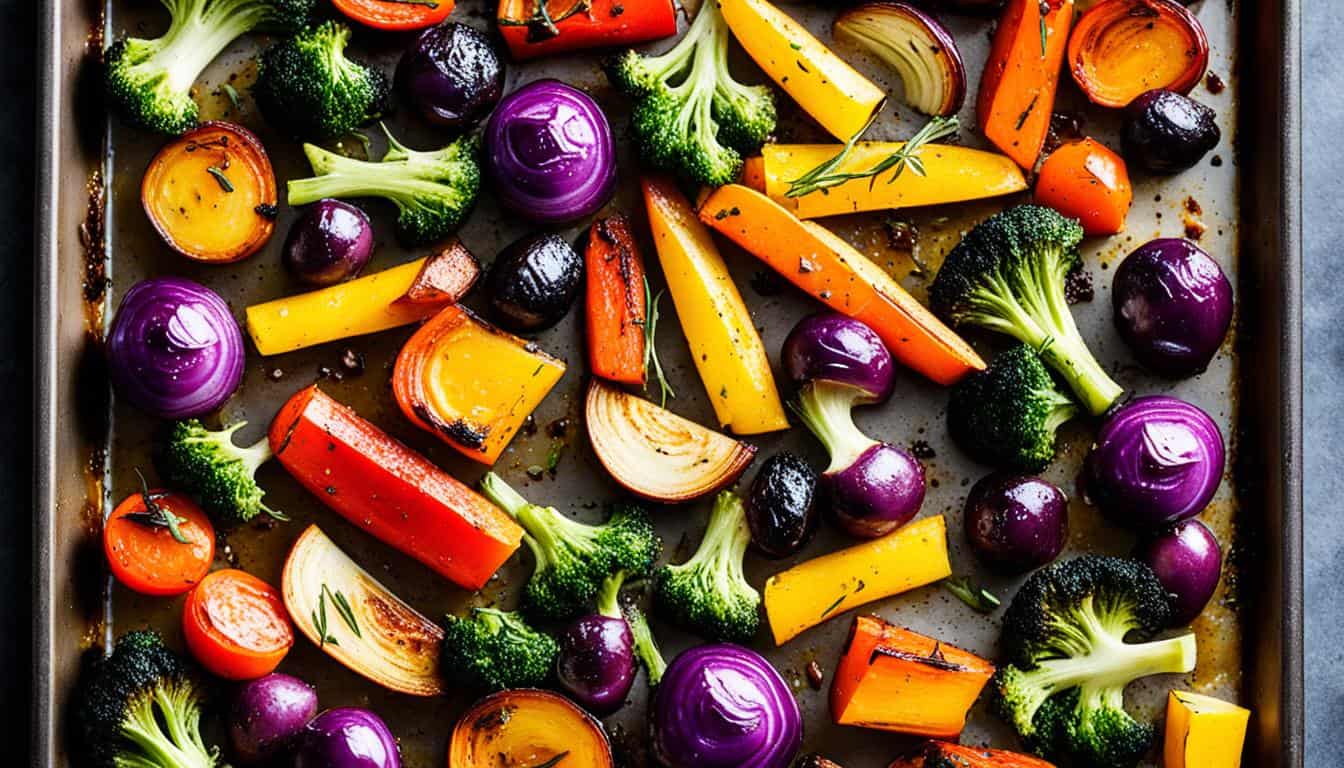
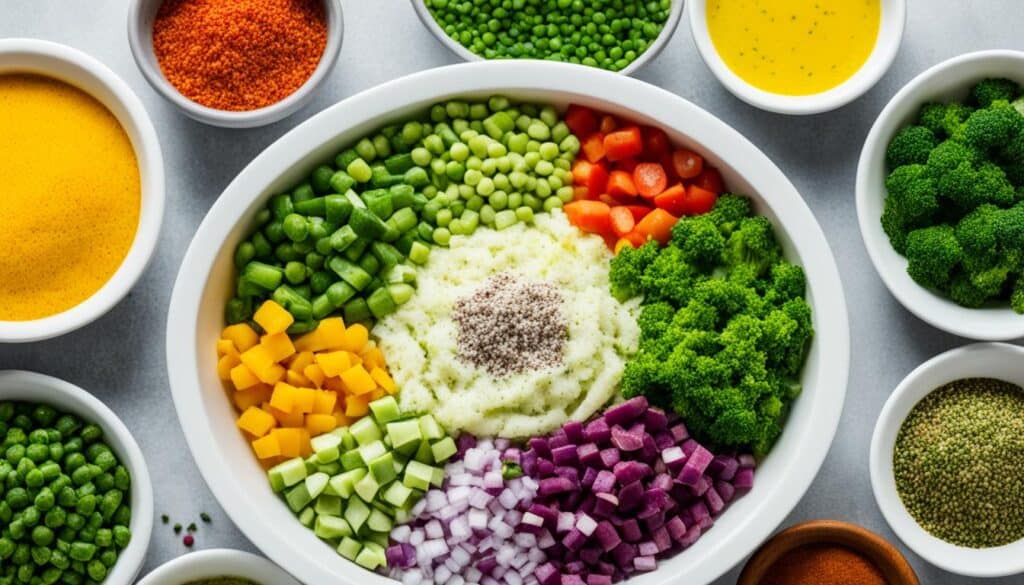
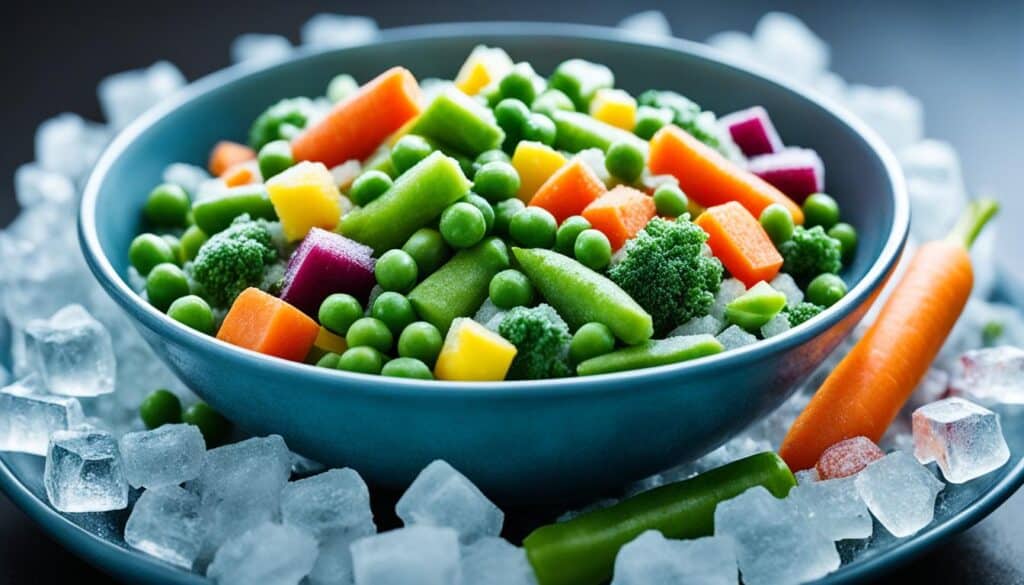
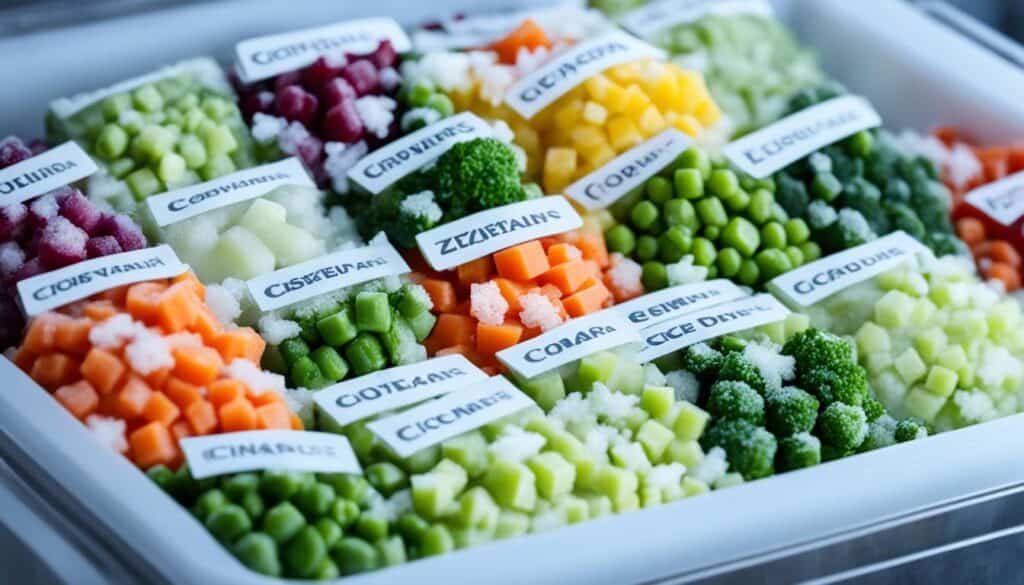
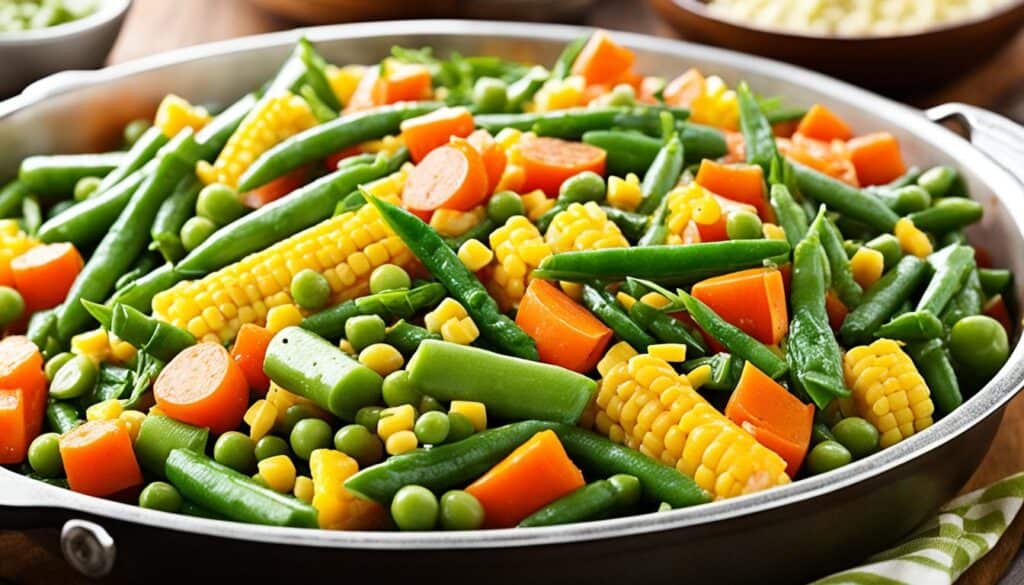
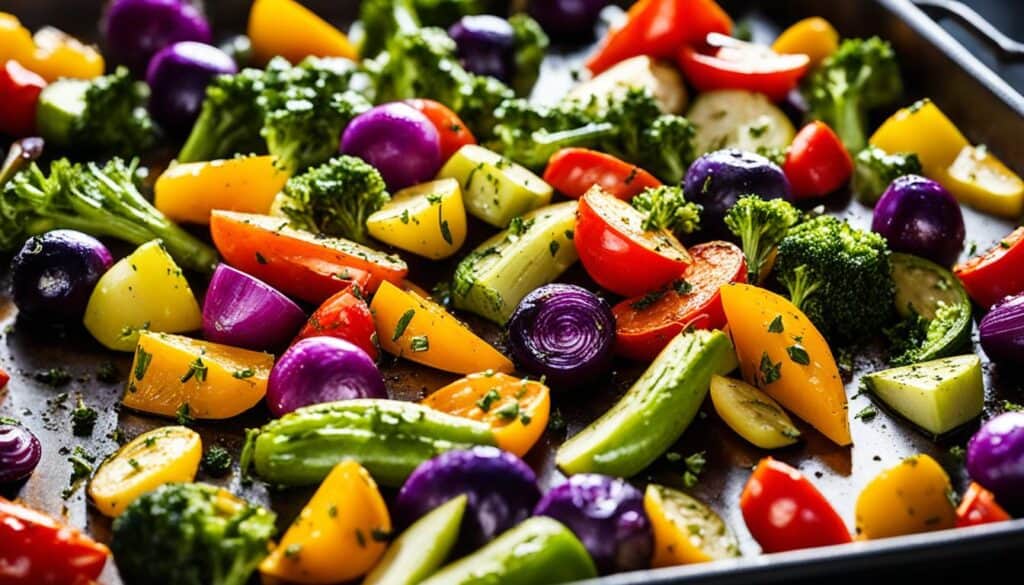



Leave a Reply